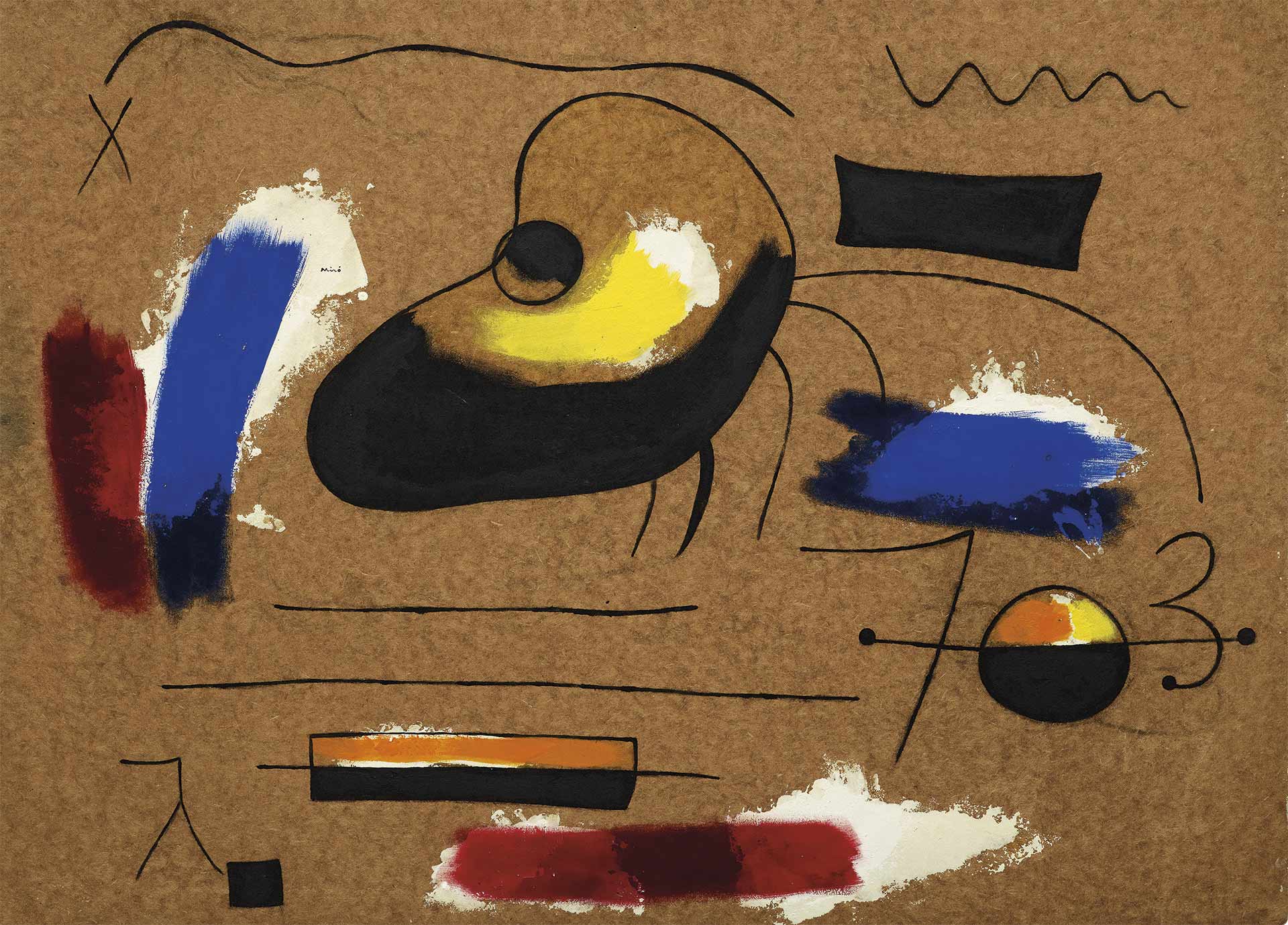Expressionisms. Toward the Constellations. White Paintings of 1945
In the 1930s, expressionism became a dominant characteristic of Miró’s work. Many works from that period show distorted forms in ambiguous spaces, probably reflecting the artist’s anxiety at the political situation around the world. In his series of paintings on masonite, Miró took advantage of the earthy texture of the material, on which he superimposed black strokes and splashes of color, using elements of rich tactility like tar, gravel, or sand.
At the start of World War II, Miró, then exiled in Paris, moved to Varengeville-sur-Mer (Normandy), where he was commissioned to paint a mural. There, besides the small landscapes entitled The Flight of a Bird over the Plain, he started his Constellations (1940–41): “After painting, I dipped my brushes in turpentine and dried them on white sheets of paper, without following preconceived ideas. The stained surface stimulated me and led to the birth of forms, human figures, animals, stars, the sky, the sun, and the moon...” Miró finished the series in Majorca, where he settled with his family after fleeing from the war. These works are the culmination of the potential of the language of signs devised by the artist.
After the Constellations, Miró produced no new art until 1945, when he created a series of large-format paintings on white backgrounds where he once more deployed his language of signs, and in whose titles the word “night” tends to appear.



